On the ceiling of a limestone cave in South Canterbury, a long, elegant sea creature has been drawn.
Centuries after this taniwha [supernatural being] was carefully illustrated, the artist's pigments are still visible.
Yet the story behind this ancient Māori artwork remains a beautiful enigma.
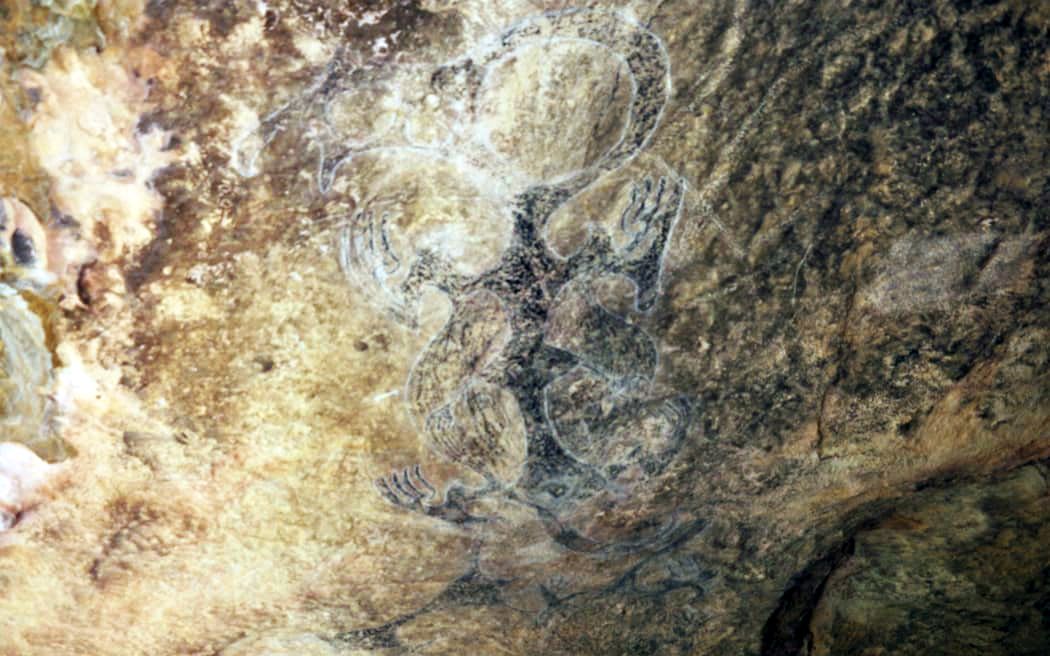
The Ōpihi Taniwha in - an ancient Māori rock drawing on the ceiling of a limestone cave in South Canterbury Photo: RNZ / Cosmo Kentishbarnes
700 sites of ancient tuhituhi o neherā [drawings of ancient times] have been discovered in Te Waipounamu [the South Island], many tucked up in the limestone gullies of working farms.

Issued in 1960, this stamp features a taniwha design based on the cave drawing known as the Ōpihi taniwha. Photo: New Zealand Post / Artwork by D. F. Kee
The best-known drawing - which inspired a 1960 postage stamp design - is known as the Ōpihi taniwha.
Archeologist Amanda Symon has spent a lot of time at the historic site as part of her work with the Ngāi Tahu Māori Rock Art Trust.
The Trust leases 13 hectares of marginal farmland in and around the Taniwha Gully site.
"First impressions when you come onto the property are it just looks like an operating farm, but when you wander down the small gully you find yourself in quite a different landscape," she says.
The landowner has been very supportive of the Trust's work to protect and preserve the ancient rock art sites.
He has now waived the site's $5,000-a-year lease fee.
"This is a significant financial contribution from a private landowner who didn't need to do that," Symon says.
Now, farm stock is kept away from Taniwha Gully, but lanolin rub lines reveal how sheep used to shelter beneath the rock art.
Thanks to ongoing community support in the form of planting and weeding, thousands of native plants are transforming the gully floor.
"The idea is to bring back some of those natural values that were present at the time the rock art was created," Symon says.
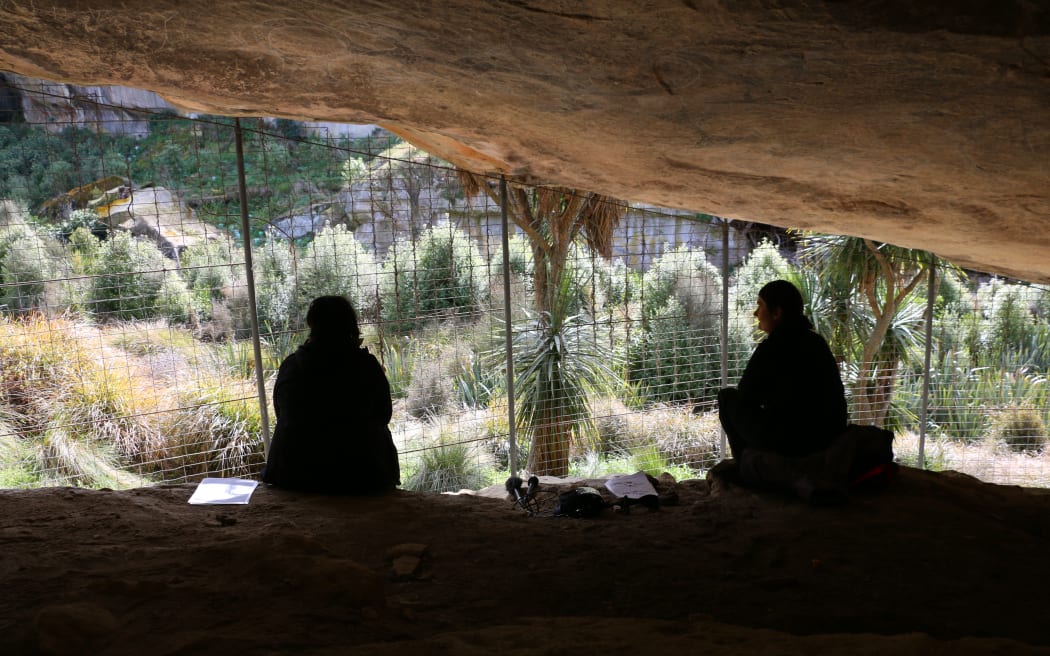
Rachel Soloman and Amanda Symon relax under the Ōpihi Taniwha Photo: Cosmo Kentish-Barnes
Four years ago, the Rock Art Trust commissioned a 10-year ecological and management plan for the area which is already showing signs of success.
"Insect life is thriving and that's bringing birds back, we're seeing tuna and eels in the creek, so yeah, it's so pleasing to see all of that coming back to life."
The Trust has also partnered with Manaaki Whenua - Landcare Research on a project exploring the site's paleoecology.
"We're looking at the ecology of deep time, so taking sediment cores to understand what the ecology of this site would have been pre-human arrival in Aotearoa, and then what were the changes when Māori came and then what were the changes again on European settlement and farming."
The research findings will inform a local education programme that the Trust oversees.
"The objective for us is to build a sense of kaitiakitanga, for having those children growing up understanding both the cultural and natural values in these limestone ecologies."
The Te Ana Maori Rock Art Centre run guided tours of Taniwha Gully out of Timaru.
Right now it's too slippery to go in there but bookings reopen in November says tour guide Rachel Solomon.
Related:
Amanda Symon on protecting Māori rock art (Saturday Morning, March 2021)
On the trail of ancient Māori artists (Our Changing World, July 2013)
Photos from the visit:
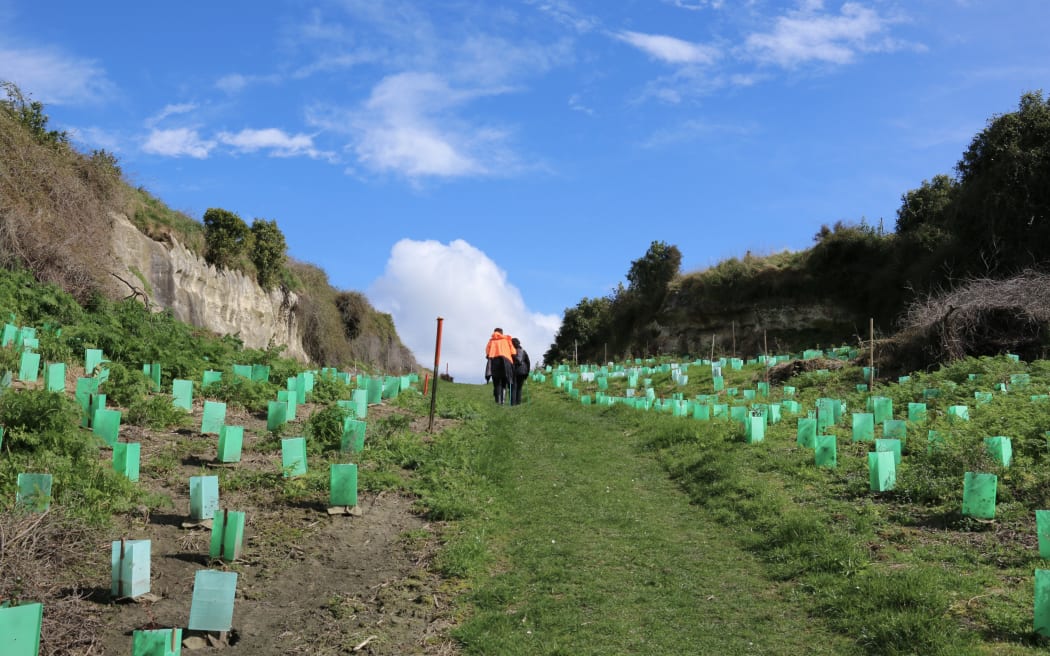
Amanda and Rachel make their way up to the top of the Ōpihi Taniwha gully site Photo: Cosmo Kentish-Barnes
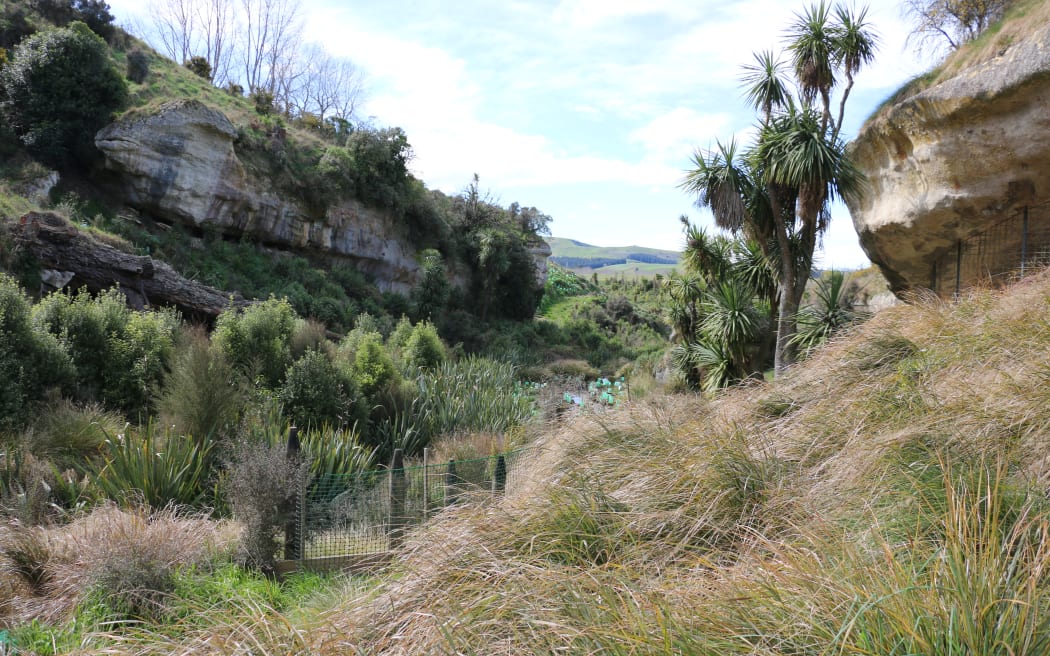
Native plants are thriving in the gully Photo: Cosmo Kentish-Barnes
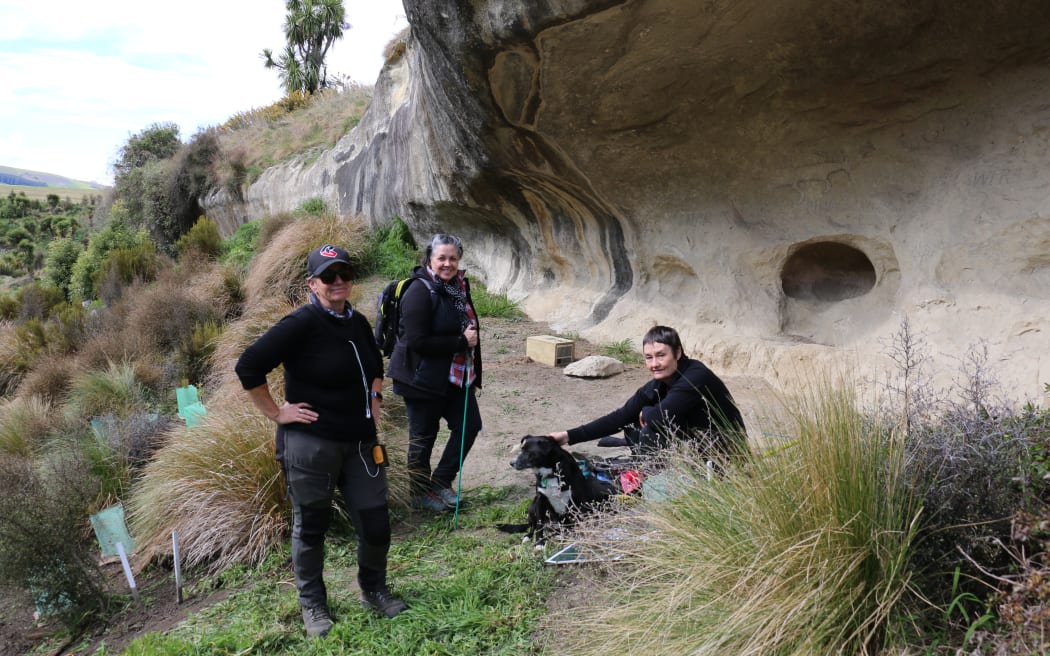
Timaru district councillor Barb Gilchrist with Rachel and Amanda. Barb does restoration work at the site thanks to the Jobs for Nature scheme. Photo: Cosmo Kentish-Barnes
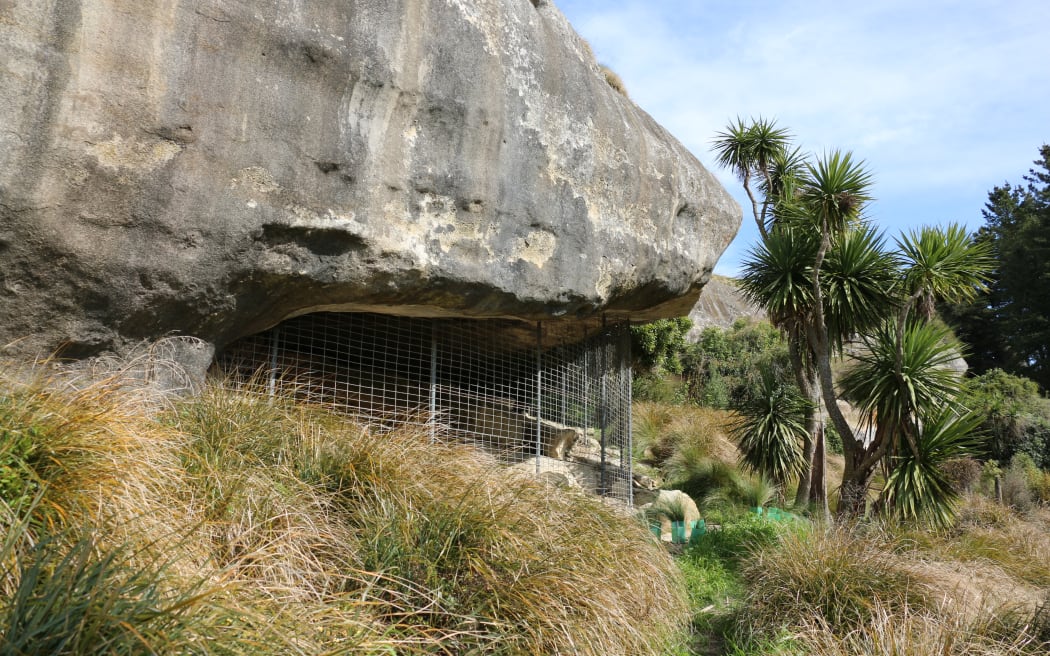
A floor to ceiling cage protects the rock art drawings Photo: Cosmo Kentish-Barnes
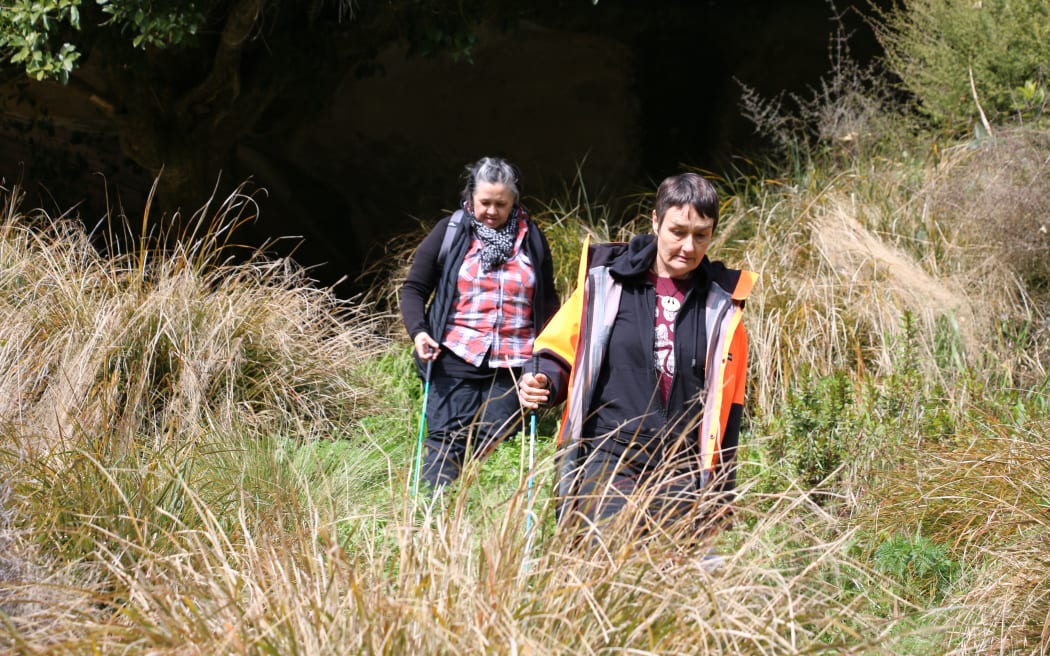
Rachel Solomon and Amanda Symon wind their way down the gully Photo: Cosmo Kentish-Barnes
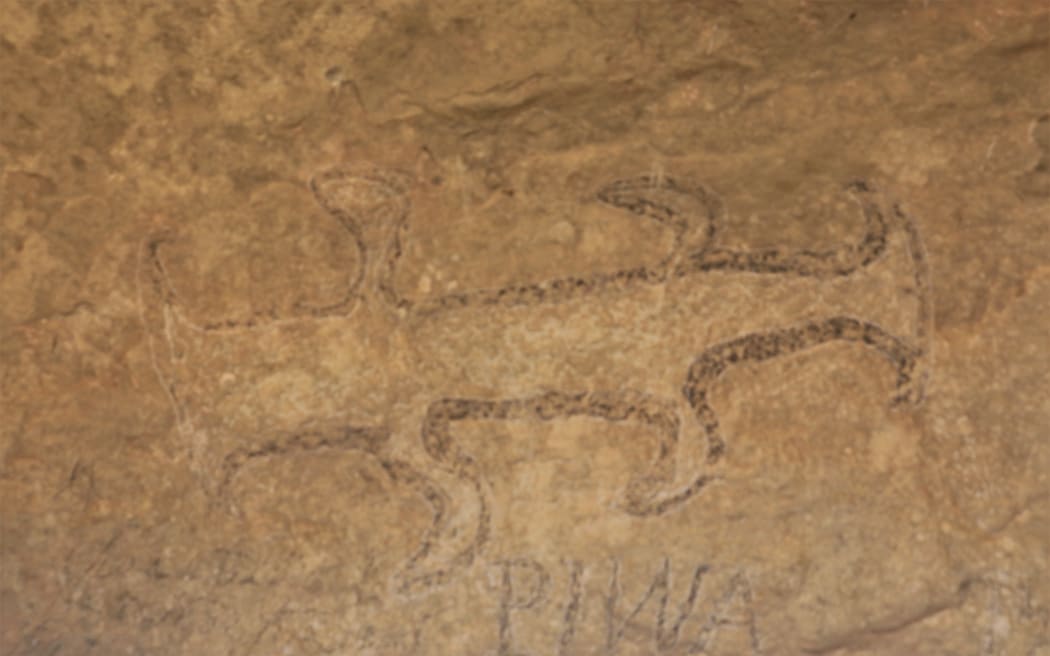
Rock art in a limestone cave Photo: Cosmo Kentish-Barnes
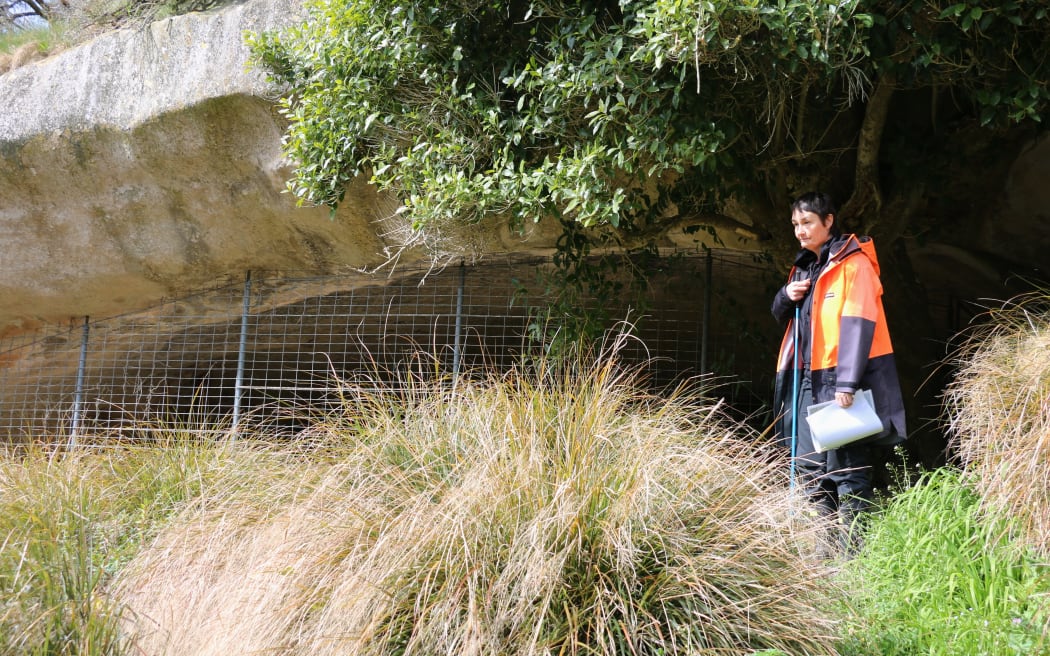
Amanda Symon outside a cave Photo: Cosmo Kentish-Barnes
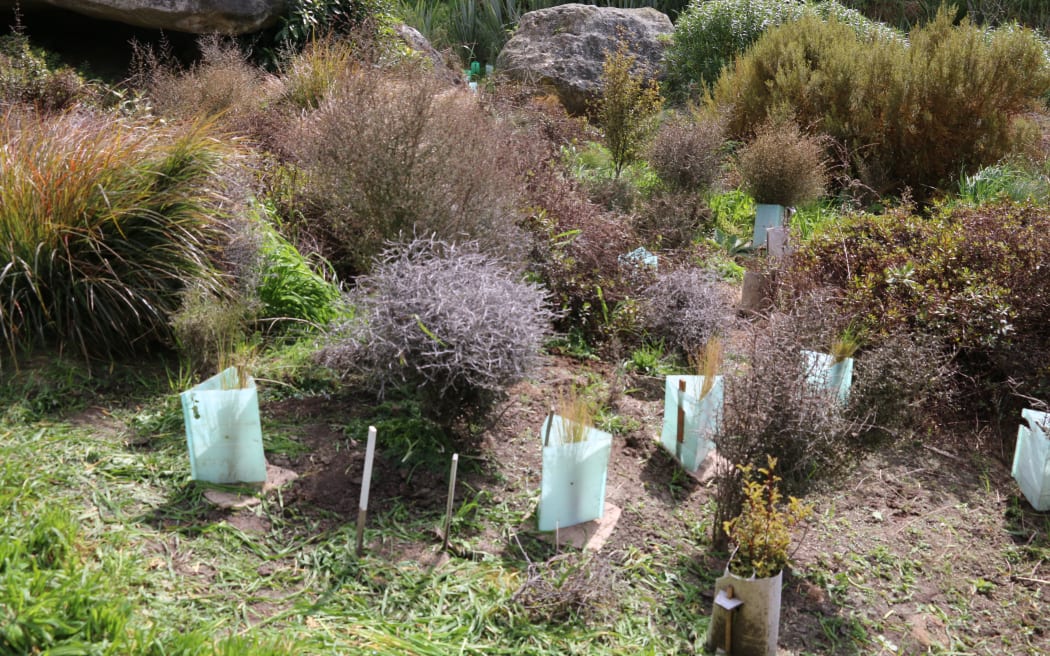
New and established plantings Photo: Cosmo Kentish-Barnes
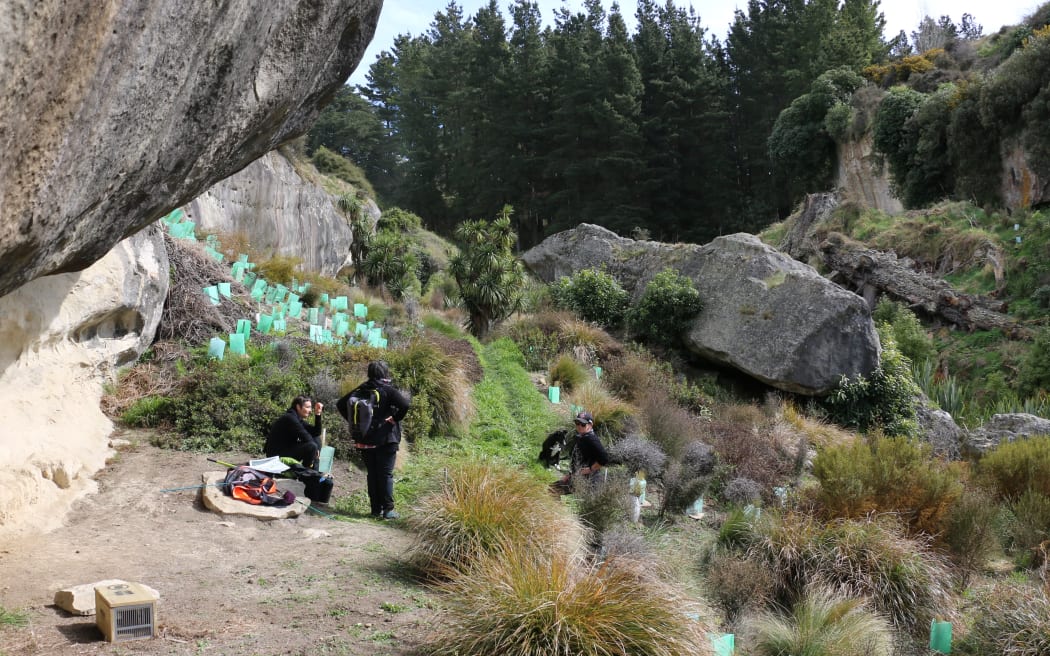
Amanda and Rachel chat with Barb Gilchrist Photo: Cosmo Kentish-Barnes
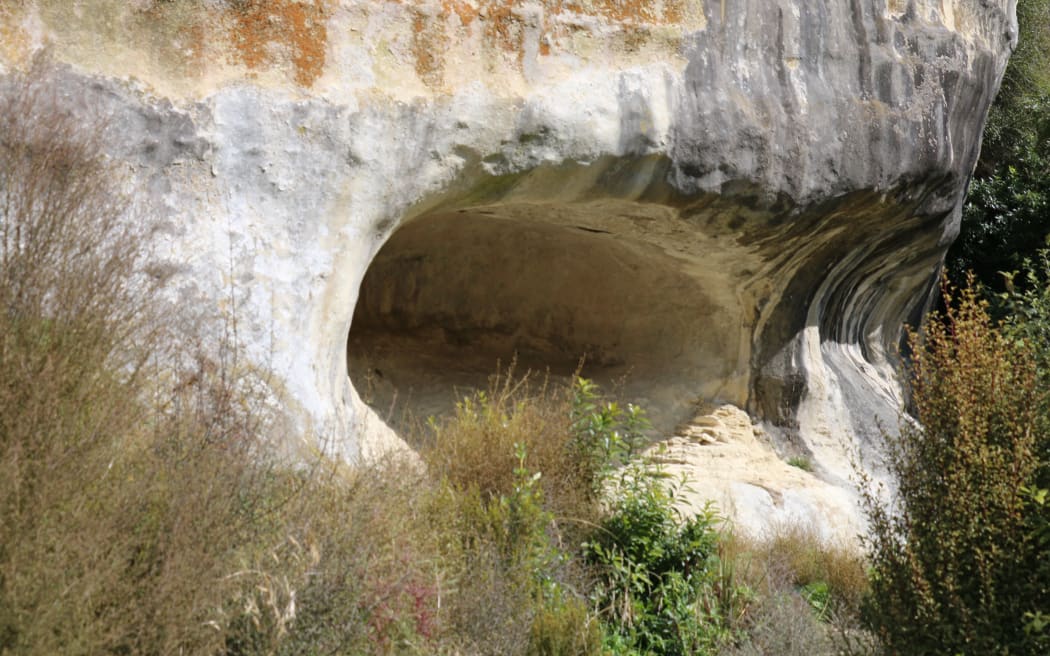
A limestone cave Photo: Cosmo Kentish-Barnes
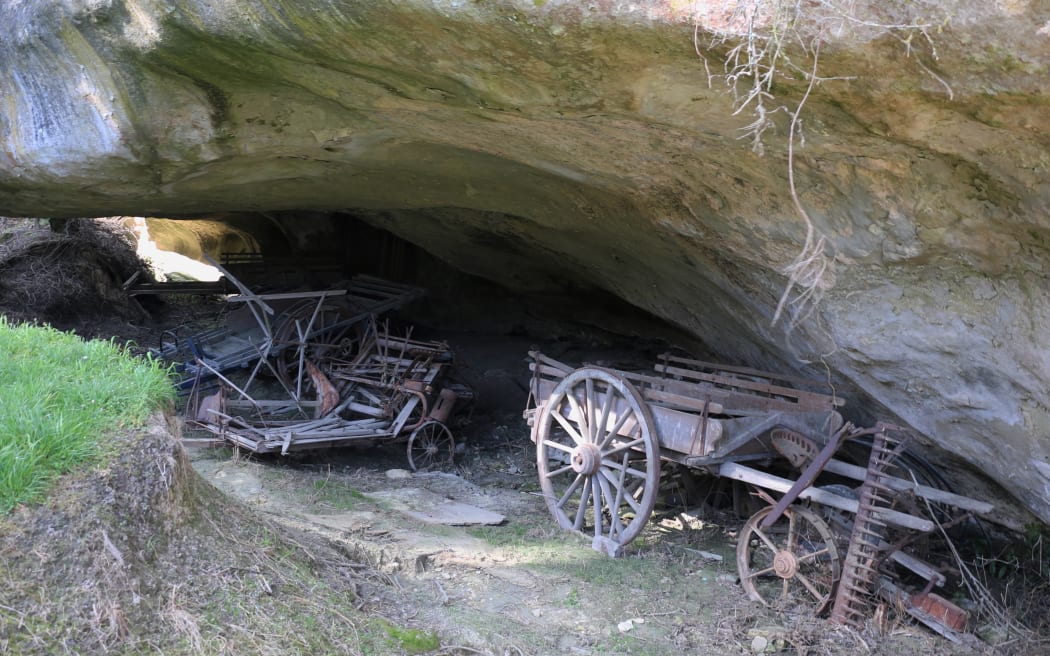
Cave of the forgotten farm implements Photo: Cosmo Kentish-Barnes

